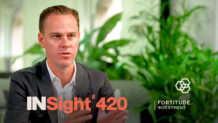See how GREEN your portfolio is while comparing it to sector averages
Evergreen Consultants has launched its proprietary Responsible Investing Grade Index (ERIG Index), which rates leading fund managers on the seven broadly accepted categories of responsible investing. These categories are those defined by the Responsible Investment Association of Australia (RIAA) as integral to a more responsible approach.
According to founder Angela Ashton, the team at Evergreen lives and breathes responsible investing. They know that climate change and responsible investing isn’t just a fad. Demand for responsible investing strategies is on the rise. Morningstar reported earlier this year that assets in portfolios focused on ESG issues alone have ballooned to about US$23 trillion ($32.4 trillion) around the globe. That’s a +600 per cent increase in the last ten years. And so, the ERIG Index was developed as a tool that allows clients to see how ‘green’ their portfolio is, while comparing it to sector averages.
Ashton says there are two main ways in which a company can be scored according to its ESG values. The main approach is bottom-up. Sustainalytics, MSCI and Morningstar all use bottom-up methods.
This method measures companies using some sort of questionnaire or data scraped from websites to come up with a score for a company. This type of analysis is great for its use with equities, but isn’t so good for fixed interest, she says; the issue being that it doesn’t look at the intentions of a company, only at the end result. It’s also not great for its use with fund analysis.
The other approach is top-down, and it is used to score managed funds, how they integrate responsible investing into processes and how deeply integrated are those processes.
Ashton believes that while a bottom-up approach may be a good way to check a manager’s portfolio, a top-down approach to ESG can provide a more complete analysis of a manager’s attitude. Bottom-up analysis can depend on the provider. For example, Apple (NASDAQ: AAPL) is scored at 0.77 by one provider, but at just 0.23 by another.
The ERIG Index draws on research from both the RIAA and the UN’s Principles for Responsible Investment (PRI). The seven categories the index looks at:
1. ESG integration
2. Negative screening
3. Norms-based screening
4. Active ownership
5. Positive screening
6. Thematic investing
7. Impact investing
Explaining the process, Ashton says “we built a questionnaire using UN PRI resources and we sent that out to a broad number of fund managers….so that we could rate them in the seven areas, one to 10.” Ultimately, the approach seeks to understand what fund managers say they will do and what they actually do, rather than rely on rating the end result of portfolios.
The result is the construction of peer and sector averages that can assist with comparisons. Any fund can take part in this, in fact, many don’t have RI or ESG built into their practice, but have clever ESG integration going on anyway. And then there are some fund managers who are active members of RI or ESG that aren’t doing well at all.
The ERIG Index score is calculated by asking 60 questions. That means the maximum score a fund can receive is 60: this is converted to a score out of 10. Based on the survey results and responses from fund managers, Evergreen has scores for over 600 funds, covering 2000 APIR codes. Large parts of the market that haven’t been scored before for one reason or another, now have a score. And interestingly, some of the non-ESG funds scored just as well as the ESG Funds. Manager grades are updated annually unless a significant change requires a review.










